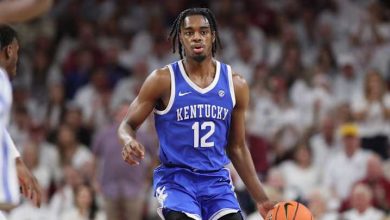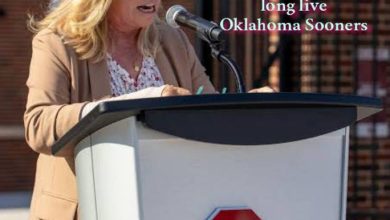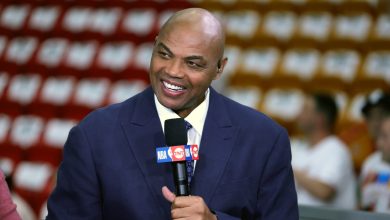How the NIL Approach Was Affected by Bryce Underwood’s Choice to Leave LSU Football.

In the rapidly evolving world of college football, the advent of Name, Image, and Likeness (NIL) deals has reshaped the landscape of college athletics in ways that were unimaginable just a few years ago. NIL has provided college athletes with an unprecedented opportunity to capitalize on their personal brands, opening doors to lucrative endorsements, sponsorships, and business ventures. However, as NIL has flourished, it has also introduced new complexities and challenges for both athletes and programs. One of the most notable developments in recent months was the high-profile decision of Bryce Underwood, a top-tier high school quarterback recruit, to leave LSU football before ever taking the field. Underwood’s decision has reverberated throughout the college football world, particularly in relation to the ongoing impact of NIL and how it has altered the recruitment process.
Underwood, who had been one of the most coveted recruits in the country, had initially committed to LSU, a program that has long been a staple of the SEC and college football’s elite. His decision to leave, however, sent shockwaves through LSU’s football program and the wider college football community, raising questions about how NIL deals are influencing recruitment and player decisions.
At the heart of Underwood’s choice was not just the potential for playing time or personal growth within LSU’s football program, but also the role that NIL opportunities played in his decision-making process. His departure illustrates how NIL, while a powerful tool for players, has also created a volatile environment where recruitment and player retention are increasingly influenced by off-field factors. This article examines how Bryce Underwood’s choice to leave LSU football highlights the evolving impact of NIL on college football, both for players and programs.
Bryce Underwood’s Recruitment and the Role of NIL
Bryce Underwood was always destined to be a star. As a quarterback out of Michigan, he quickly gained national attention for his impressive performances on the field, showcasing a blend of athleticism, arm strength, and football IQ that made him one of the top recruits in the nation. His talent on the field was undeniable, and by the time he began considering college programs, Underwood had schools from across the country vying for his commitment.
For LSU, a school known for producing elite quarterbacks such as Joe Burrow, Underwood’s recruitment was a critical moment. LSU football coach Brian Kelly and his staff worked hard to secure a commitment from Underwood, recognizing the transformative potential he could bring to the program. LSU, which has always prided itself on its ability to recruit top-tier talent, saw Underwood as the centerpiece of its future offensive plans. However, in the era of NIL, recruitment was no longer just about the X’s and O’s or the traditional selling points of playing time and team success.
NIL had a massive influence on Underwood’s decision-making process. He was aware of the financial opportunities available to players through NIL deals, which could significantly enhance a college athlete’s earning potential, even before entering the NFL. For a top recruit like Underwood, NIL was no longer just a secondary consideration—it was a major factor in his recruitment. The chance to monetize his name, image, and likeness while playing college football was part of the allure for him, and LSU, with its large fanbase and strong football program, appeared to offer an ideal platform for maximizing those opportunities.
However, when Underwood ultimately decommitted from LSU and chose to leave the program, the question remained: what role did NIL play in his decision? While there was no single factor that caused Underwood to leave, it’s clear that NIL opportunities at LSU, or the lack thereof, played a significant part in his shift away from the program.
The Impact of NIL on College Football Recruitment
NIL has fundamentally altered how athletes approach recruitment. In the past, recruits primarily considered factors such as coaching staff, program success, facilities, and playing time when choosing a college. Today, NIL deals have become a driving force in recruitment, as players can now use their marketability to create new financial opportunities. This shift has placed more pressure on college programs to build robust NIL frameworks to attract and retain top talent.
For top recruits like Underwood, NIL has become a game-changer. The financial landscape of college football has created a competitive environment where schools must offer enticing NIL packages to players to secure their commitment. In some cases, NIL deals can exceed traditional scholarships in value, leading to a scenario where recruits might prioritize potential NIL earnings over other factors, including program culture or team success.
When Underwood initially committed to LSU, the expectation was that the program would provide a strong NIL framework for him. However, it’s been widely reported that LSU, while competitive, did not offer the same NIL opportunities that some of the other schools in the mix were providing. This discrepancy likely played a role in Underwood’s decision to leave, as he explored other options that could offer a higher earning potential through NIL deals.
One of the key challenges for programs like LSU is balancing the demands of NIL with the traditional pillars of college football—such as team chemistry, development, and competitive success. While NIL has provided athletes with significant financial rewards, it has also led to increased instability in recruitment and player retention, as athletes are now more likely to weigh potential financial opportunities alongside football-related factors.
The Role of NIL in Underwood’s Decision to Leave
Bryce Underwood’s decision to leave LSU football reflects the growing tension between NIL and the traditional elements of college football recruitment. While it is impossible to say definitively that NIL was the sole reason for Underwood’s departure, it is clear that the financial opportunities associated with NIL played a significant role in his decision.
For LSU, Underwood’s decision to leave is a clear sign that the program may need to improve its NIL offerings in order to remain competitive in the recruitment of elite talent. Other programs, especially those in the SEC and other power conferences, have invested heavily in their NIL programs, creating lucrative deals for their top recruits. These deals can be highly attractive to players like Underwood, who may see NIL as an opportunity to capitalize on their marketability while still pursuing a college football career.
In Underwood’s case, it appears that LSU was not able to match the NIL offers he received from other schools. As a result, Underwood opted to leave LSU in search of a program where he could maximize his earning potential through NIL. This reflects a broader trend in college football, where NIL opportunities are increasingly influencing the recruitment process. Schools that fail to provide strong NIL offerings risk losing out on top-tier recruits, as players are now more focused than ever on their financial futures, alongside their athletic goals.
The Future of NIL in College Football
Underwood’s decision underscores the rapidly changing nature of college football, and how NIL is reshaping the dynamics of recruitment and player retention. As NIL continues to evolve, it will become even more important for programs to develop robust NIL strategies that can compete with the financial incentives offered by rival schools.
For LSU, this presents both challenges and opportunities. On one hand, the Tigers will need to invest in their NIL infrastructure to ensure they can continue to attract top-tier talent. This will require the program to work closely with boosters, businesses, and alumni to create competitive NIL opportunities for recruits. Additionally, LSU will need to develop strategies to keep current players on the roster, as NIL deals are also affecting player retention, with some players transferring to schools that offer more lucrative deals.
On the other hand, NIL presents an opportunity for programs like LSU to build stronger relationships with their players. Rather than relying solely on traditional recruiting strategies, LSU can now engage with athletes in new ways, providing them with financial opportunities that can benefit both the players and the program. By creating a comprehensive and competitive NIL strategy, LSU can ensure that it remains a top destination for talent, while also fostering a culture of mutual benefit and collaboration between the program and its athletes.









